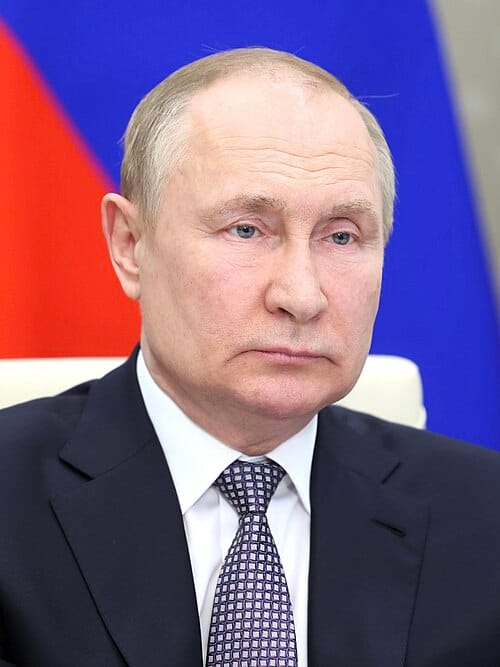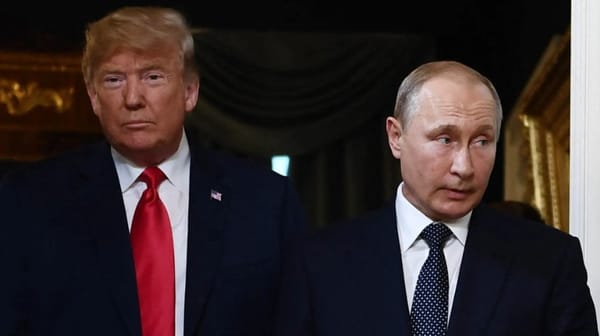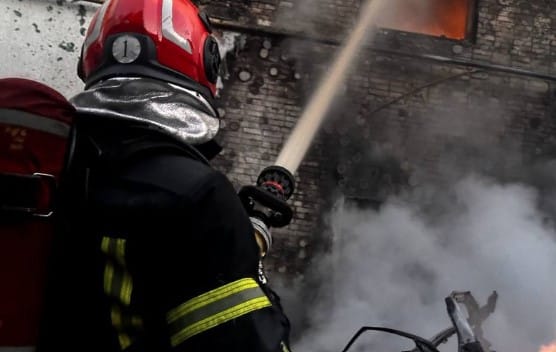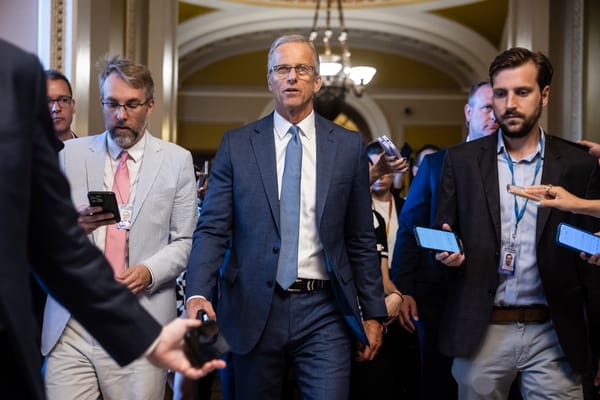Putin Declares Easter Ceasefire in Ukraine as Hundreds of Prisoners Are Exchanged

Introduction
On April 19, 2025, Russian President Vladimir Putin declared a unilateral Easter ceasefire in Ukraine, marking the first significant pause in hostilities since the full-scale invasion began over three years ago. The announcement, framed as a humanitarian gesture for Orthodox Easter, coincided with the largest prisoner exchange of the conflict, as hundreds of Russian and Ukrainian soldiers were released and returned home. While the Kremlin presented the ceasefire as a step toward peace, Ukrainian President Volodymyr Zelenskyy and his government dismissed it as a manipulative move, citing ongoing attacks and air raid alerts even as the truce was set to begin. The developments unfolded amid mounting international pressure, with U.S. President Donald Trump warning that the United States may abandon mediation efforts if progress toward a lasting peace is not made within days.
This report examines the details of the ceasefire, the scale and significance of the prisoner swap, the reactions from both sides and international actors, and the broader context of the war and diplomatic efforts.
The Ceasefire: Details, Timing, and Intent
Announcement and Scope
President Putin’s ceasefire declaration was made public on Saturday, April 19, during a televised meeting with Chief of the General Staff Valery Gerasimov. The Kremlin ordered Russian forces to halt all combat operations in Ukraine starting at 6 p.m. Moscow time (1500 GMT) on Saturday, with the truce set to last until midnight (2100 GMT) following Easter Sunday[1][2][3][4][5][6][7][8][9][10].
Putin stated,
“We expect the Ukrainian side to take a similar approach. Concurrently, our military must remain prepared to counter any potential breaches of the ceasefire and provocations from the adversary, as well as any aggressive actions.”
The Russian Defense Ministry emphasized that the truce was a humanitarian gesture and that forces would adhere to the ceasefire as long as Ukraine reciprocated[3:1][4:1][9:1][10:1].
Humanitarian Framing
The ceasefire was explicitly tied to Orthodox Easter—one of the most important religious holidays in the region. Putin described the move as being “guided by humanitarian considerations,” with the hope that it would allow families to observe the holiday in relative safety and provide an opportunity for reflection and, potentially, a step toward peace[3:2][4:2][9:2][10:2].
Military Context
The announcement came just hours after the Russian Defense Ministry reported that its forces had expelled Ukrainian troops from one of their last strongholds in Russia’s Kursk region, where Ukrainian forces had conducted a surprise incursion the previous year[1:1][3:3][4:3][5:1][6:1]. Russian officials claimed that nearly all territory previously held by Ukrainian forces in the region had been “liberated,” and that Russian troops were prepared to respond to any violations of the truce.
The Largest Prisoner Exchange Since the Invasion
Numbers and Logistics
Coinciding with the ceasefire, Russia and Ukraine conducted the largest prisoner swap since the start of the war. According to official statements:
- Russia’s Ministry of Defense reported that 246 Russian service members were returned from territory controlled by Kyiv.
- Ukraine received 277 soldiers back from Russian captivity, including 31 wounded prisoners of war. In exchange, 15 wounded Russian soldiers in need of urgent medical care were also transferred[2:1][11][12][6:2][13][14].
The exchange was mediated by the United Arab Emirates, which both sides thanked for its role in facilitating the process[12:1][13:1][14:1].
Who Was Released
The Ukrainian Coordination Headquarters for the Treatment of Prisoners of War reported that the released Ukrainian soldiers included members of the Armed Forces, the National Guard, the State Transport Service, and the Border Guard Service. Many had defended Mariupol and other key locations in Donetsk, Kherson, Zaporizhzhia, and Luhansk oblasts. The returnees included nine officers and 268 privates and sergeants, with a significant number being young people born after 2000[12:2][13:2].
President Zelenskyy highlighted the emotional impact, noting that a female soldier imprisoned since May 2022 would finally be reunited with her family[12:3][13:3].
Humanitarian Significance
This was the 63rd prisoner swap since the start of the full-scale war in 2022, with over 4,500 people—soldiers and civilians—having been returned from Russian captivity to Ukraine. The scale of this exchange, especially on the eve of Easter, was widely seen as a humanitarian gesture, regardless of the underlying political calculations[12:4][13:4][14:2].
Reactions from Kyiv and Moscow
Putin’s Framing
Putin presented the ceasefire and prisoner swap as evidence of Russia’s openness to peace and willingness to negotiate. He stated that the truce would serve as a test of Kyiv’s sincerity and readiness for peaceful negotiations, while warning Russian troops to remain vigilant for any violations or provocations by Ukrainian forces[1:2][2:2][3:4][4:4][5:2][6:3][7:1][8:1][9:3][10:3].
Zelenskyy’s Skepticism
Ukrainian President Volodymyr Zelenskyy immediately dismissed the ceasefire as a cynical ploy. He posted on X (formerly Twitter):
“Air raid alerts are spreading across Ukraine. Shahed drones in our skies reveal Putin’s true attitude toward Easter and toward human life.”
He accused Putin of using the truce to manipulate human lives and distract from continued attacks, noting that air raid sirens and drone threats persisted even as the ceasefire was set to begin[1:3][2:3][3:5][4:5][5:3][6:4][7:2][8:2][9:4][10:4].
Foreign Minister Andrii Sybiha echoed this skepticism, pointing out that Ukraine had previously accepted a U.S.-proposed 30-day ceasefire in March, which Russia had declined. He contrasted the current 30-hour truce with the longer, more substantive pause Kyiv had sought, saying, “Thirty hours instead of 30 days”[3:6][15][7:3][8:3][9:5].
Mutual Distrust
Both sides accused the other of insincerity and of using ceasefire declarations for tactical advantage. Ukrainian officials cited previous Russian ceasefires—such as the 36-hour Orthodox Christmas truce in January 2023—as attempts to regroup and prepare for further attacks, rather than genuine efforts to end the conflict[1:4][3:7][7:4][8:4][9:6].
International Context and U.S. Pressure
U.S. Mediation and Frustration
The ceasefire and prisoner swap came amid renewed diplomatic pressure from the United States. President Donald Trump, who has been actively engaged in mediation efforts, said on Friday that negotiations between Ukraine and Russia were “reaching a critical point” and insisted that neither side was “playing” him in his push to end the war[1:5][2:4][3:8][11:1][5:4][15:1][6:5][7:5][16][8:5][9:7][10:5].
Secretary of State Marco Rubio warned that the U.S. might “move on” from its efforts to secure a peace deal if no progress is made in the coming days, following months of stalled negotiations[1:6][2:5][3:9][11:2][5:5][15:2][6:6][7:6][16:1][8:6][9:8][10:6]. The Trump administration has made clear that patience is running out, and that both Kyiv and Moscow need to demonstrate a genuine willingness to halt the violence.
International Mediation
The United Arab Emirates played a key role in facilitating the prisoner exchange, reflecting the growing involvement of non-Western actors in humanitarian aspects of the war[12:5][13:5][14:3]. The UAE’s mediation was praised by both Russia and Ukraine as crucial to the success of the swap.
European Response
European leaders, including French President Emmanuel Macron, have continued to push for a broader ceasefire and a return to the negotiating table. However, divisions within the EU over the best approach to Russia and Ukraine persist, complicating efforts to present a unified front.
The Ceasefire in Practice: Early Reports and Violations
Air Raid Alerts and Drone Attacks
Despite the ceasefire declaration, air raid sirens sounded in Kyiv and across Ukraine just before the truce was set to begin. Ukrainian air defense units reported intercepting Russian Shahed drones, suggesting that attacks were ongoing even as the ceasefire was supposed to take effect[1:7][2:6][3:10][4:6][5:6][6:7][7:7][8:7][9:9][10:7].
Mutual Accusations
Russian officials accused Ukraine of violating the truce, claiming that Ukrainian forces continued attacks on energy infrastructure and frontline positions. Ukrainian officials countered that Russian strikes and drone attacks persisted, and that Moscow’s ceasefire was a public relations maneuver rather than a genuine pause in hostilities[1:8][2:7][3:11][4:7][5:7][6:8][7:8][8:8][9:10][10:8].
Historical Precedent
Previous Russian ceasefire declarations, such as the 2023 Orthodox Christmas truce, were similarly met with skepticism and accusations of violations by both sides. Analysts noted that such truces have often been used by Russia to reposition troops and equipment, rather than as steps toward lasting peace[1:9][3:12][7:9][8:9][9:11].
The Broader War: Stalemate, Attrition, and Human Cost
Military Situation
The war in Ukraine remains at a bloody stalemate, with neither side able to achieve a decisive breakthrough. Russia has consolidated control over much of the Donbas, southern Ukraine, and border regions, while Ukraine has mounted successful counteroffensives but struggled to regain lost territory in recent months.
Attrition and Civilian Impact
The conflict has taken a devastating toll on both military personnel and civilians. The Ukrainian government estimates that over 4,500 prisoners, both military and civilian, have been returned since the start of the war, but thousands remain in captivity[12:6][13:6]. Civilian casualties continue to mount, and infrastructure across Ukraine has been severely damaged by missile and drone attacks.
Humanitarian Concerns
The prisoner swap and temporary ceasefire provided a brief respite for families and communities, but humanitarian organizations warn that the situation remains dire. Displacement, trauma, and economic hardship are widespread, and the risk of renewed violence looms large.
Diplomatic Outlook: What Comes Next?
Prospects for Lasting Peace
The Easter ceasefire, while symbolically significant, is unlikely to lead to a lasting halt in hostilities unless accompanied by substantive negotiations and mutual concessions. Ukraine continues to call for a comprehensive ceasefire and the restoration of its territorial integrity, while Russia insists on security guarantees and recognition of its gains.
U.S. and International Role
The United States’ warning that it may withdraw from mediation efforts adds urgency to the diplomatic process. Without sustained international pressure and credible guarantees, the risk is high that the conflict will return to its previous intensity once the truce expires.
The Prisoner Exchange as a Confidence-Building Measure
The large-scale prisoner swap, facilitated by the UAE, represents a rare moment of cooperation and could serve as a foundation for further humanitarian agreements or incremental steps toward de-escalation. However, without broader political progress, such gestures may remain isolated events.
Conclusion
President Putin’s Easter ceasefire and the largest prisoner exchange since the start of the war mark a rare moment of pause and humanitarian relief in a conflict that has otherwise been defined by attrition and intransigence. While the truce offers hope for families and a brief respite from violence, skepticism remains high in Kyiv and among Ukraine’s Western allies, who see the move as a tactical maneuver rather than a genuine step toward peace.
With the U.S. signaling impatience and the diplomatic window narrowing, the coming days will be critical in determining whether this Easter truce is a prelude to renewed negotiations—or simply a fleeting interruption in a war that shows little sign of ending. For now, the fate of thousands of prisoners, the safety of civilians, and the future of Ukraine remain in the balance as the world watches for signs of real progress toward peace.
Sources:[1:10][2:8][3:13][11:3][4:8][12:7][5:8][15:3][6:9][13:7][7:10][16:2][14:4][8:10][9:12][10:9]
https://www.npr.org/2025/04/19/nx-s1-5370056/putin-easter-ceasefire-truce-ukraine ↩︎ ↩︎ ↩︎ ↩︎ ↩︎ ↩︎ ↩︎ ↩︎ ↩︎ ↩︎ ↩︎
https://www.nbcwashington.com/news/national-international/russia-ukraine-ceasefire-prisoner-swap/3895535/ ↩︎ ↩︎ ↩︎ ↩︎ ↩︎ ↩︎ ↩︎ ↩︎ ↩︎
https://www.cbc.ca/news/world/russia-ukraine-easter-ceasefire-prisoner-swap-1.7514322 ↩︎ ↩︎ ↩︎ ↩︎ ↩︎ ↩︎ ↩︎ ↩︎ ↩︎ ↩︎ ↩︎ ↩︎ ↩︎ ↩︎
https://www.reuters.com/world/europe/russias-putin-declares-unilateral-easter-ceasefire-ukraine-2025-04-19/ ↩︎ ↩︎ ↩︎ ↩︎ ↩︎ ↩︎ ↩︎ ↩︎ ↩︎
https://www.cnn.com/2025/04/19/europe/russia-ukraine-war-easter-truce-intl/index.html ↩︎ ↩︎ ↩︎ ↩︎ ↩︎ ↩︎ ↩︎ ↩︎ ↩︎
https://www.latimes.com/world-nation/story/2025-04-19/russia-ukraine-swap-prisoners-as-putin-announces-an-easter-ceasefire ↩︎ ↩︎ ↩︎ ↩︎ ↩︎ ↩︎ ↩︎ ↩︎ ↩︎ ↩︎
https://www.independent.co.uk/news/world/europe/putin-easter-truce-ukraine-russia-war-trump-peace-talks-b2736127.html ↩︎ ↩︎ ↩︎ ↩︎ ↩︎ ↩︎ ↩︎ ↩︎ ↩︎ ↩︎ ↩︎
https://www.nytimes.com/2025/04/19/world/europe/russia-ukraine-easter-truce.html ↩︎ ↩︎ ↩︎ ↩︎ ↩︎ ↩︎ ↩︎ ↩︎ ↩︎ ↩︎ ↩︎
https://www.aljazeera.com/news/2025/4/19/russia-putin-declares-easter-ceasefire-in-ukraine-conflict ↩︎ ↩︎ ↩︎ ↩︎ ↩︎ ↩︎ ↩︎ ↩︎ ↩︎ ↩︎ ↩︎ ↩︎ ↩︎
https://www.cbsnews.com/news/russia-ukraine-putin-easter-temporary-ceasefire/ ↩︎ ↩︎ ↩︎ ↩︎ ↩︎ ↩︎ ↩︎ ↩︎ ↩︎ ↩︎
https://san.com/cc/russia-ukraine-conduct-largest-prisoner-swap-since-invasion-began/ ↩︎ ↩︎ ↩︎ ↩︎
https://kyivindependent.com/ukraine-brings-home-246-prisoners-of-war-in-swap-with-russia/ ↩︎ ↩︎ ↩︎ ↩︎ ↩︎ ↩︎ ↩︎ ↩︎
https://newsukraine.rbc.ua/news/ukraine-russia-conduct-major-prisoner-exchange-1745078092.html ↩︎ ↩︎ ↩︎ ↩︎ ↩︎ ↩︎ ↩︎ ↩︎
https://www.aa.com.tr/en/russia-ukraine-war/russia-ukraine-swap-hundreds-of-prisoners-in-largest-exchange-since-outbreak-of-war/3543210 ↩︎ ↩︎ ↩︎ ↩︎ ↩︎
https://www.yahoo.com/news/putin-declares-brief-easter-ceasefire-155924980.html ↩︎ ↩︎ ↩︎ ↩︎
https://abcnews.go.com/International/putin-declares-temporary-easter-truce-ukraine/story?id=120972916 ↩︎ ↩︎ ↩︎




